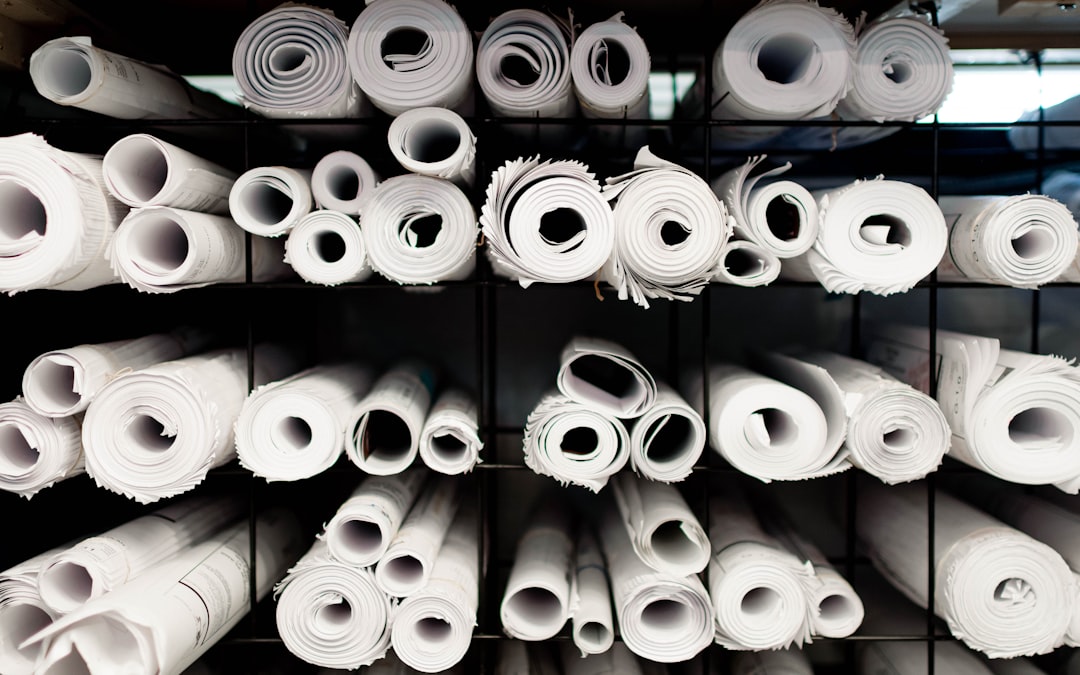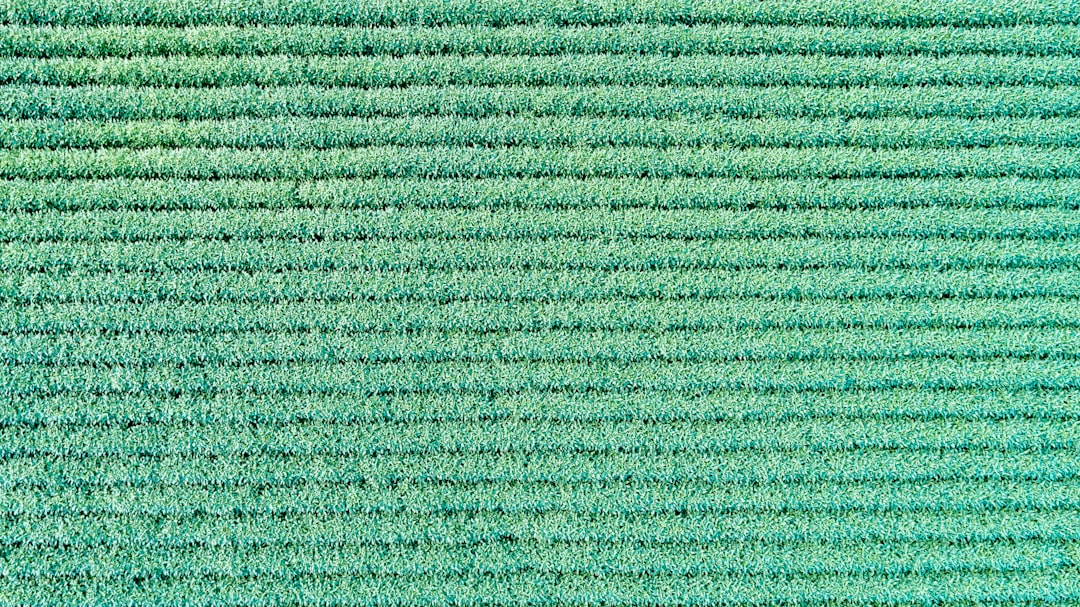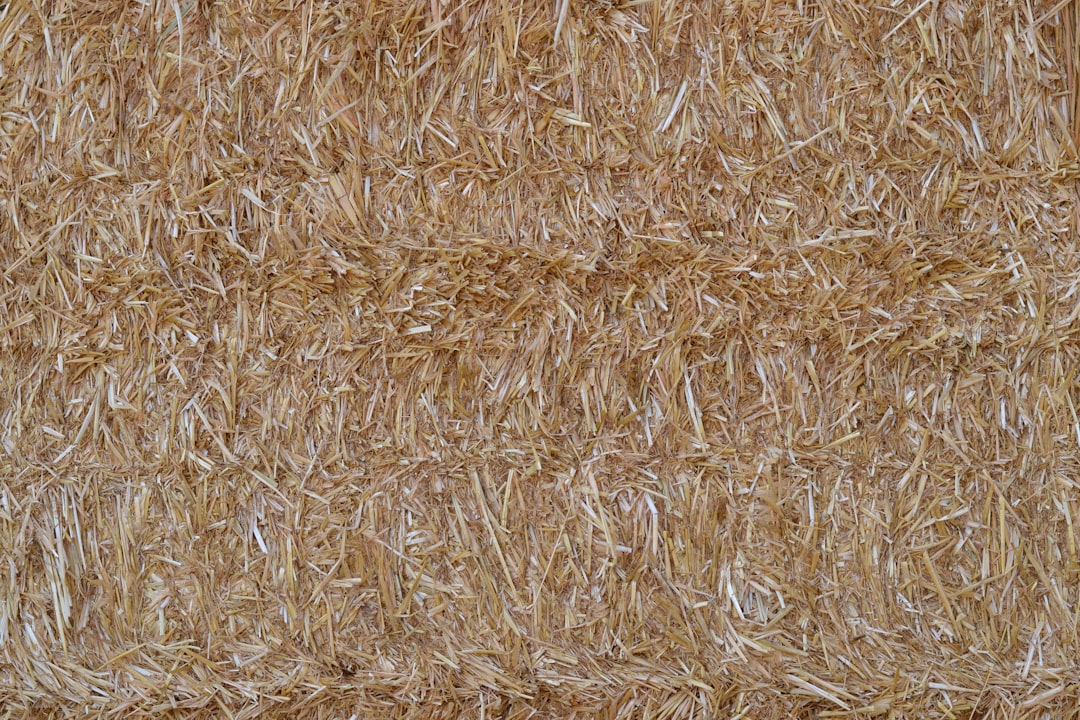

Engage prospects with a scan and streamline customer engagement with FREE QR code marketing tools by Sona – no strings attached!
Create a Free QR CodeFree consultation

No commitment

Engage prospects with a scan and streamline customer engagement with FREE QR code marketing tools by Sona – no strings attached!
Create a Free QR CodeFree consultation

No commitment
The evolution of digital advertising has brought both unprecedented opportunities and new challenges for marketers. As audience targeting becomes more sophisticated, brands are finding innovative ways to connect with consumers while navigating privacy concerns. In recent years, the focus has shifted from broad demographic data to more granular, behavior-driven segmentation, as explored in Audience Insights.
Marketers today rely on vast datasets to identify and engage prospective customers. However, with the phase-out of third-party cookies and increasing regulations, such as the General Data Protection Regulation (GDPR), the landscape is changing rapidly. Brands that can adapt to these shifts—by leveraging first-party data—are positioned for long-term success.
Even as technology advances, the fundamentals of compelling storytelling remain unchanged. Successful campaigns use data-driven insights to inform creative decisions, resulting in messages that resonate on a personal level. In this ever-evolving landscape, adaptability and consumer trust are more critical than ever.
QR codes have revolutionized carpet manufacturing by streamlining technician support and enhancing operational efficiency. By embedding instant access to maintenance guides, troubleshooting videos, and inventory data, QR codes transform routine tasks into seamless, data-driven workflows that reduce downtime and improve service quality. Imagine technicians resolving issues faster with just a scan, boosting productivity and ensuring consistent carpet quality across every project.
With Sona QR, you can create dynamic, trackable QR codes tailored for carpet manufacturing needs—updating content instantly without reprinting and capturing real-time scan data to optimize technician performance and resource allocation. This technology not only supports technicians on the ground but also enables better oversight and continuous improvement.
Start for free with Sona QR today and empower your carpet manufacturing team to work smarter, faster, and more effectively with every scan.
The article does not provide details on the carpet manufacturing process.
The article does not mention QR codes or their benefits for carpet manufacturers and retailers.
The article does not discuss the latest technologies used in carpet manufacturing.
The article does not address methods for preventing counterfeit carpet production.
The article does not provide information on best practices for carpet installation and repair services.

The carpet manufacturing industry is experiencing rapid transformation fueled by advances in technology, sustainability initiatives, and shifting buyer expectations. From sourcing innovative materials to deploying state-of-the-art manufacturing equipment, leaders face constant pressure to optimize both efficiency and customer experience. Yet, enduring challenges persist, with the fragmented nature of day-to-day communication and support being chief among them. Printed manuals, analog order forms, or static product sheets often leave technicians and sales teams without timely access to critical information, meaning high-value prospects and new opportunities can easily slip through the cracks.
QR codes have quickly risen as a practical bridge connecting physical assets, floor covering products, and printed documentation directly to dynamic digital content. In a sector where fast access to information can mean the difference between on-time installation and costly rework, QR technology brings real-world guidance to the job site, simplifies troubleshooting, and unlocks actionable insights for business improvement. With just one scan, tailored support or data entry is instantly delivered, closing the gap between physical workflows and digital resources.
By employing QR codes thoughtfully, carpet manufacturing companies can enhance field technician support and minimize errors during installation and repair. This technology also surfaces valuable data that would otherwise remain hidden, such as identifying which teams, products, or regions are requesting the most support, or recognizing high-intent commercial buyers who may not submit traditional forms. Explore frameworks and the Sona QR use case library to address these long-standing challenges and see how integrating QR technology at every touchpoint elevates productivity and decision-making across your operations.

Many installation setbacks stem from gaps in real-time support, outdated manuals, or missed training protocols, resulting in longer downtime or costly errors. QR codes provide field teams with on-demand information, allowing them to overcome these challenges efficiently. When a technician can scan a code on a carpet roll and watch a 90-second placement video, or a maintenance lead can open a digital guide while standing next to a loom, the combination of speed and context eliminates guesswork and reduces rework.
To make QR-enabled support reliable, companies should standardize what content is provided, how often it is refreshed, and where codes are placed. Treat QR codes as part of your quality system rather than a novelty. Identify the repeatable moments where things break down, map a digital resource to each moment, and make scanning the easiest action a person can take on-site.
Transitioning from reliance on printed documents or ad hoc support calls to actionable, data-driven QR workflows fosters a more dynamic, responsive workforce. Account-level QR scanning tools now make it possible to integrate scan behavior directly into technician management systems, supporting workforce planning, resource allocation, and continuous improvement in support delivery. If you use a platform like Sona QR, you can centralize code creation and analytics, update destinations without reprinting, and sync scan activity with your service and CRM tools.

Carpet manufacturing teams routinely encounter limitations in connecting analog processes to digital systems. Documentation is often paper-based, production staff rotate across shifts, and job-site installers may work far away from a computer. This disconnect exposes companies to gaps like missing high-value prospects and lost service signals, where individuals engage with a sample, brochure, or carton label but never fill out a form, leaving their needs untracked.
QR codes break this pattern by providing instant, context-rich access to digital instructions, compliance documentation, and troubleshooting tools directly from physical assets. A technician scanning a code on a carpet roll can view the latest installation protocol, confirm adhesive recommendations by substrate, or open a service request without digging through a binder. A maintenance lead can scan a tufting machine placard to log parts replaced, access safety lockout procedures, and timestamp completion, all in one workflow.
Dynamic QR codes bring an additional advantage: they allow content updates after printing. That means newly revised installation guides, updated certifications, or product recall notices can be linked in minutes, without reprinting thousands of labels or manuals. Centralized scan analytics give managers visibility into which resources are being used, when, and by whom. Patterns emerge quickly, such as high scan volumes on a specific product’s adhesive guidance or repeated troubleshooting requests linked to a regional contractor base. These insights help teams refine instructions, adjust training, and tighten upstream quality steps before issues escalate. QR can also help combat counterfeits in premium categories through initiatives like QR code-based GI tags that protect carpet authenticity.
QR technology also supports sustainability priorities by reducing paper wastage and minimizing the carbon footprint associated with reprinting and shipping updated literature. When you replace a 20-page manual with a scan-to-mobile experience, you not only cut costs but also make compliance documentation easier to maintain and retrieve. The result is a more resilient operation that adapts faster to change, improves safety, and accelerates time to resolution on the factory floor and the job site.
Maintaining multiple channels for technician support, data collection, and compliance documentation often creates friction and silos. QR codes can be flexed to a variety of formats that match common carpet manufacturing workflows and the environments where scanning occurs.
Dynamic QR codes are especially useful in this vertical. Use static codes for unchanging destinations like a fixed PDF, and dynamic codes when you need editability, tracking, and campaign flexibility. Platforms like Sona QR let you manage dynamic destinations, append UTM parameters, and roll up analytics at product, batch, or channel level.

Siloed communication and lack of contextual support materials are persistent obstacles in carpet manufacturing. Missed follow-ups and delayed responses can lead to callbacks, reduced customer satisfaction, and lost upsell or cross-sell opportunities. QR codes placed at high-impact touchpoints convert offline interest into measurable digital engagement and prompt the next best action.
With QR-enabled workflows, every scan is tied to a specific asset or activity, enabling precise attribution and smarter follow-up. When scan data syncs with your CRM or service platform, sales and operations can prioritize leads, escalate support tickets, and surface upsell triggers at the right moment. Over time, you build a more complete picture of engagement across physical and digital touchpoints, which informs pricing, inventory, and content strategies.

In practice, a handful of QR use cases deliver outsized value in carpet manufacturing. The most effective ones meet technicians where they work, remove friction from customer interactions, and make data capture effortless.
For each use case, start with the simplest journey that solves a recurring problem. Expand the experience over time by analyzing scan behavior and adding resources that users regularly seek.
Each QR code scan signals intent and context. By deploying multiple codes across your operation and marketing, you can segment audiences automatically and retarget with messages that reflect what a person scanned and why. For identifying anonymous scanners and routing follow-up, see Sona’s blog post titled The Essential Guide to Account Identification: Turn Your Website into a Goldmine.
Begin by mapping your funnel and roles. In carpet manufacturing, audience cohorts often include installers, facility managers, architects and designers, distributors, and procurement teams. The content that earns a scan differs by role, so the follow-up should too. An installer who scans an adhesive chart does not need the same content as a designer who scans a sustainability certification.
For retargeting tactics grounded in real behavior, follow Sona’s Playbook titled Intent-Driven Retargeting: Driving High-Impact Campaigns with First-Party Intent Signals. With Sona QR, each code becomes a smart entry point that captures role, asset, and intent. That data makes your retargeting precise, minimizes generic follow-ups, and boosts the odds that your next message solves the user’s immediate need.
Traditional print marketing and physical collateral play a central role in carpet marketing, yet they often sit outside digital analytics. QR codes close that gap by linking brochures, displays, and events to measurable interactions and outcomes. For campaign ideas that pair print and QR, see this overview of print marketing.
Scan events flowing into analytics or a CRM show which materials perform, how scanners move from offline to online, and where to double down. A centralized platform like Sona QR makes it easy to monitor performance across channels, retire underperforming assets, and optimize the journey with A/B-tested landing pages.
A successful QR initiative starts with a deliberate plan. Treat QR projects like any other operational or marketing program: define a clear goal, align content and placement to that goal, and measure what matters. The following steps translate that approach into a repeatable playbook.
Different teams may enter at different points in this checklist. Operations leaders often start with equipment and installation support, while marketing leads begin with sample books and trade shows. Regardless of your entry point, use dynamic codes whenever you need tracking, editability, or integration with downstream systems.
Clarify what you want to improve. For technician support, you might target a reduction in install errors on a new product line or faster mean time to resolution on a high-maintenance machine. For marketing, you might aim to increase qualified demo requests from trade show traffic or enrich CRM records from sample interactions.
Anchor the use case to a measurable outcome and a specific audience. Examples include shortening the average install by 15 percent on commercial glue-down jobs, increasing spec sheet downloads from sample displays, or doubling on-site incident report completion on the production floor.
Choose static or dynamic based on your need for flexibility and analytics. Static codes work for permanent resources like a fixed safety PDF. Dynamic codes are better for anything that might change or that you want to track across regions, assets, or campaigns.
Pair the format to the task. Use web links for installation hubs, forms for defect reporting, vCards for rep contacts, and app links for maintenance tools. If you plan to segment and retarget based on scans, dynamic codes are essential because they enable UTM parameters, destination changes, and unified reporting.
Design with the scanning environment in mind. On equipment, use metal or chemical-resistant labels, high-contrast frames, and short, benefit-driven CTAs like Scan for maintenance steps. On packaging, size codes generously, avoid curved surfaces and seams, and keep a quiet zone around the code for reliable scanning.
Test in real conditions before you scale. Check scannability under harsh lighting, in dusty spaces, with protective gloves, and at the distances your teams will actually use. Validate performance across device types and camera apps. If a code points to a video, confirm it loads fast on cellular connections and that the page is mobile-optimized.
Roll out starting with placements tied to your goal. For installation support, prioritize roll labels, adhesive containers, and job-site checklists. For maintenance, label high-frequency failure points and service panels. For marketing, focus on sample books, showroom displays, and trade show signage.
Stagger deployment to learn quickly. Launch in a few plants, product lines, or regions, gather scan data and feedback, then expand with improved content and placement. Document your standards so codes look consistent and staff know how to promote them.
Instrument every code with analytics. Monitor scan volumes, peak times, device types, and conversion behavior. Identify which resources drive reduced errors or faster repairs and double down on those assets. Sunset content that gets low engagement or causes confusion.
Iterate continuously. A/B test landing pages, calls to action, or code designs. Update dynamic destinations when protocols change or when a better resource becomes available. Sync results to your CRM and service platforms to tie scans to leads, tickets, and revenue. A tool like Sona QR centralizes these steps so you can manage and optimize at scale.
Start small to build momentum, then expand to a portfolio of codes that span the factory, warehouse, field, and showroom. Over time, the data will show where QR support has the greatest impact and which audiences need additional resources.
Leaders in carpet manufacturing have often lacked data tying real-world touchpoints to business outcomes. Advanced QR tracking and analytics change that by capturing scan behavior and connecting it to downstream events like reduced error rates, faster service, or closed deals. When you can see which codes are driving impact, you can allocate budget and energy with confidence. For a strategic framework, read Sona’s blog post titled The Essential Guide to Offline Attribution: Maximizing ROI Through Offline Channels.
The value increases when scan activity is not isolated. Integrations with web analytics, service desks, and CRM platforms let you connect the dots between a scan, a follow-up action, and a business result. Over time, this creates a robust performance loop that supports continuous improvement in both operations and marketing.
With this data foundation, QR codes become a genuine performance channel, not just a convenience. You can prove value across technician support, marketing, and compliance, and you can scale confidently.
QR code initiatives thrive when they are adopted by the entire organization and aligned to everyday workflows. Invest in user education, standardize how codes look and where they live, and automate the follow-up so the value is immediate for the person who scanned and visible to the team that supports them.
Aim for a balance of breadth and depth. Cover the most common friction points first, then deepen the experience by tailoring content to specific roles, surfaces, and job types. When technicians see time savings and reduced friction, scanning becomes second nature.
Creative deployments can kickstart adoption. For example, add QR codes to dye lot tags that link to a batch health dashboard, or place a QR on invoices that opens a reorder form for complementary adhesives and trim. The more context-sensitive and helpful the destination, the higher your scan rates and ROI.

Early adopters in flooring and adjacent manufacturing categories have demonstrated how QR codes can compress time-to-value for both technicians and buyers. The most compelling examples prioritize clarity of purpose and a short path to action.
These examples share a pattern: the destination is purpose-built for the moment of scanning, and the data is routed to teams who can act quickly. Use that pattern as your blueprint, then adapt it to your products, channels, and constraints.
A solid technical setup can still underperform if the user experience is weak or the deployment environment is ignored. Avoid the most common mistakes by designing for real-world conditions and linking codes to content that answers the most likely questions at that location.
Pitfalls are often avoidable with a few adjustments. If scans are low near a machine, relocate the code or increase contrast. If installers ignore a long video, replace it with a short clip and a printable checklist. Small design and content choices compound into big performance gains.
QR codes have matured from a nice-to-have to a strategic lever in carpet manufacturing. They convert every physical surface into a digital entry point, turn every moment of interest into a moment of action, and provide a clear line of sight from scan to outcome. When technicians can resolve issues faster and buyers can act immediately, efficiency rises and customer satisfaction improves.
For your organization, the path forward is clear: start with one or two high-impact use cases, choose dynamic codes for flexibility and tracking, and integrate scan data into your existing tools. Over time, standardize placement, polish the content linked to each code, and automate follow-ups that save time for both staff and customers.
With Sona QR, you can generate and manage codes, update destinations without reprinting, and sync scan activity with your CRM and service systems. That combination of agility and attribution helps you capture demand at the source, support technicians in the moments that matter, and connect real-world engagement to measurable results. Start creating QR codes for free.
QR codes have revolutionized carpet manufacturing by empowering technicians with instant access to vital product data, maintenance instructions, and quality control records. Beyond streamlining operations, these dynamic codes enhance technician efficiency, reduce errors, and enable real-time tracking of inventory and service history—transforming everyday workflows into high-impact, measurable outcomes.
Imagine technicians instantly scanning QR codes on carpet batches or equipment to access up-to-date manuals or report issues on the spot, accelerating problem resolution and ensuring consistent quality. With Sona QR, you can create dynamic, trackable QR codes that update instantly without reprinting, connect every scan to actionable insights, and optimize technician performance across your manufacturing process.
Start for free with Sona QR today and turn every scan into a step toward greater operational excellence and customer satisfaction in carpet manufacturing.
Carpet manufacturing involves sourcing innovative materials, deploying advanced equipment, and managing production workflows to optimize efficiency and meet customer expectations.
QR codes provide instant access to digital instructions, support, and data collection from physical products, improving technician efficiency, reducing errors, preventing information gaps, and enabling better customer engagement and retargeting.
The latest technologies include dynamic QR codes for real-time content updates, analytics integration, smart tracking of scan behavior, and digital workflows that connect physical assets to digital resources.
Manufacturers can use QR code-based Geographic Indication tags to protect carpet authenticity and discourage counterfeit production by enabling verification of genuine products.
Best practices include placing durable QR codes at work locations for on-demand step-by-step guides and videos, standardizing content updates, tracking technician performance, and using analytics to continuously optimize support and reduce errors.
Use Sona QR's trackable codes to improve customer acquisition and engagement today.
Create Your FREE Trackable QR Code in SecondsJoin results-focused teams combining Sona Platform automation with advanced Google Ads strategies to scale lead generation

Connect your existing CRM

Free Account Enrichment

No setup fees
No commitment required

Free consultation

Get a custom Google Ads roadmap for your business






Launch campaigns that generate qualified leads in 30 days or less.
